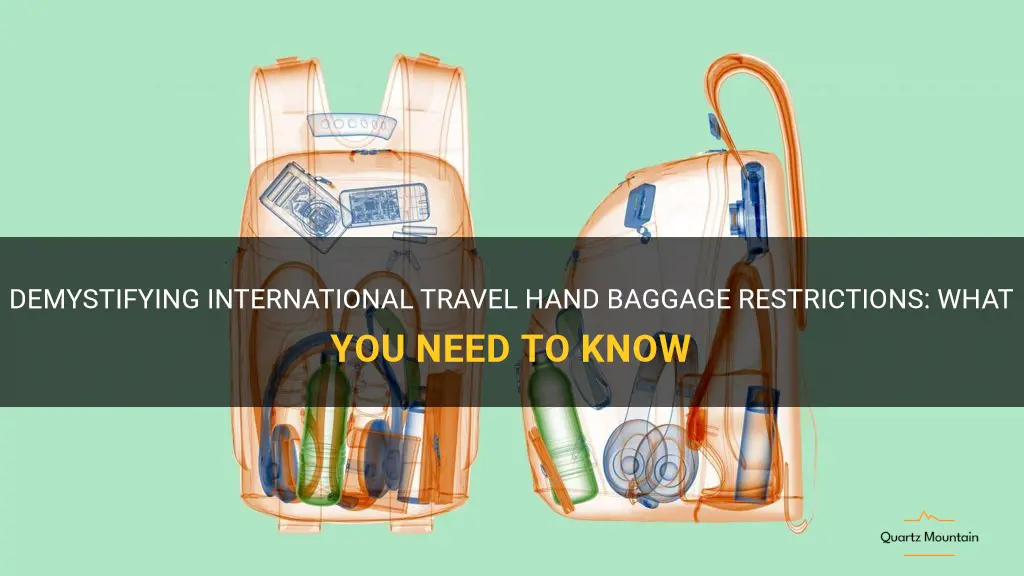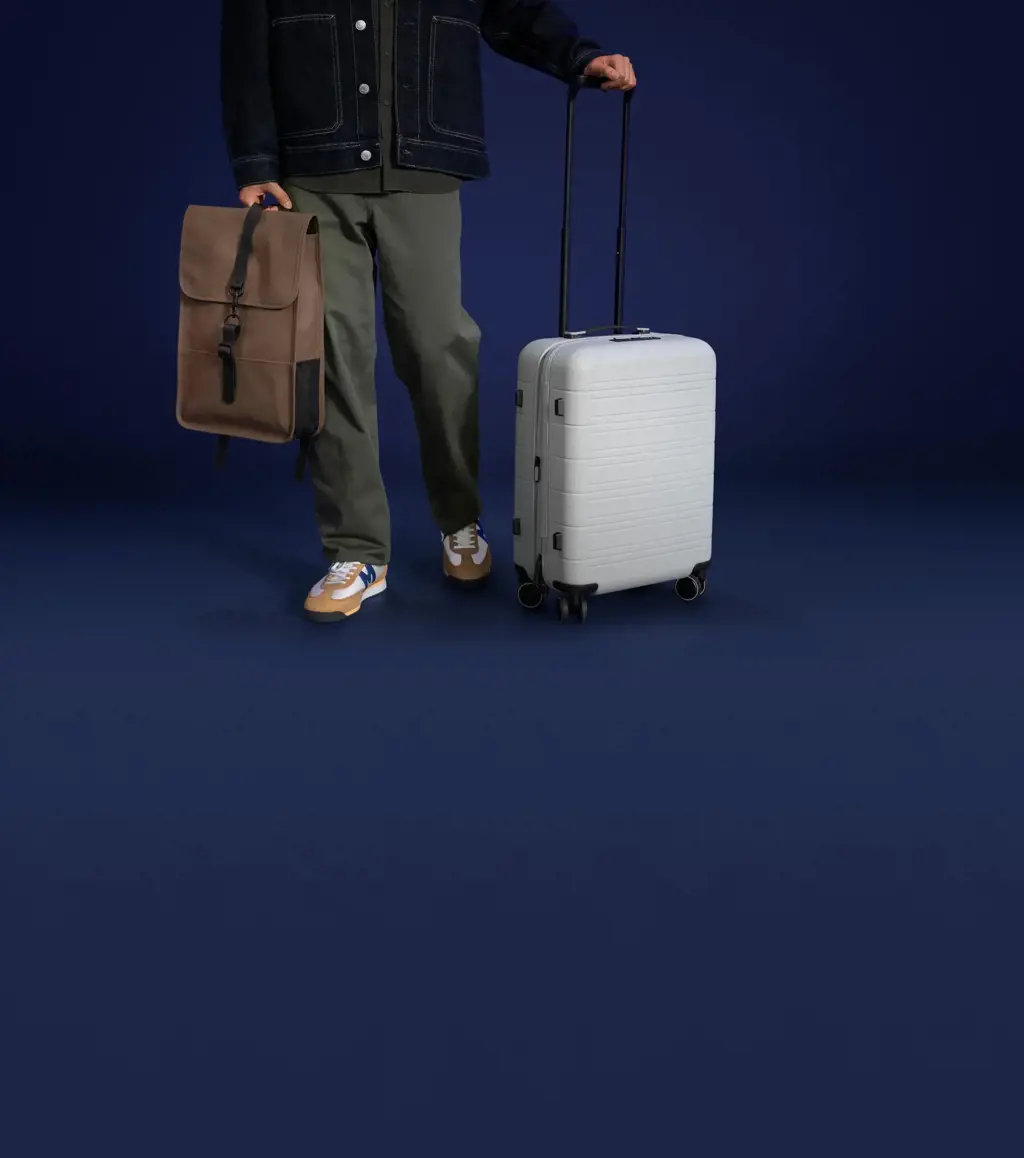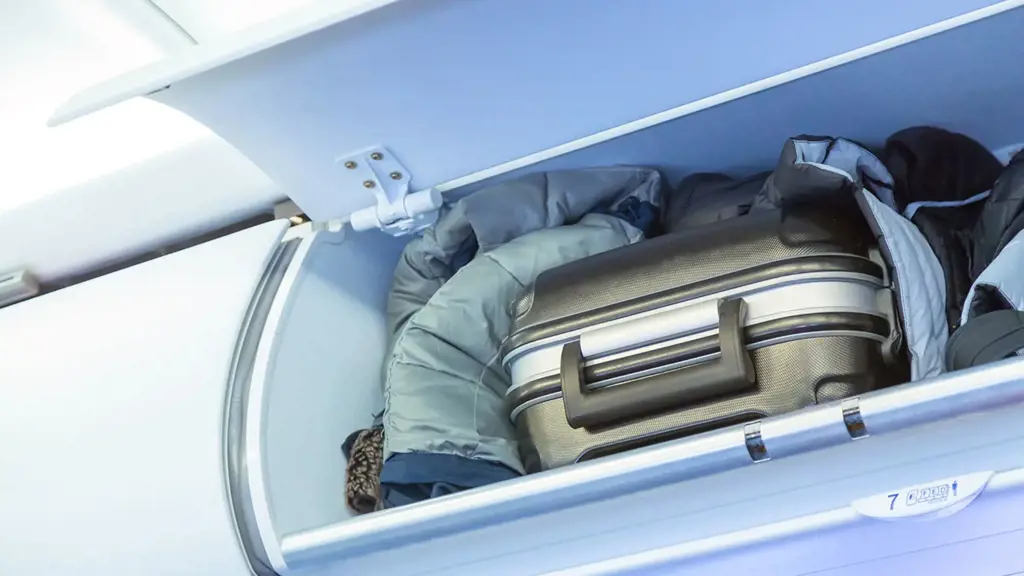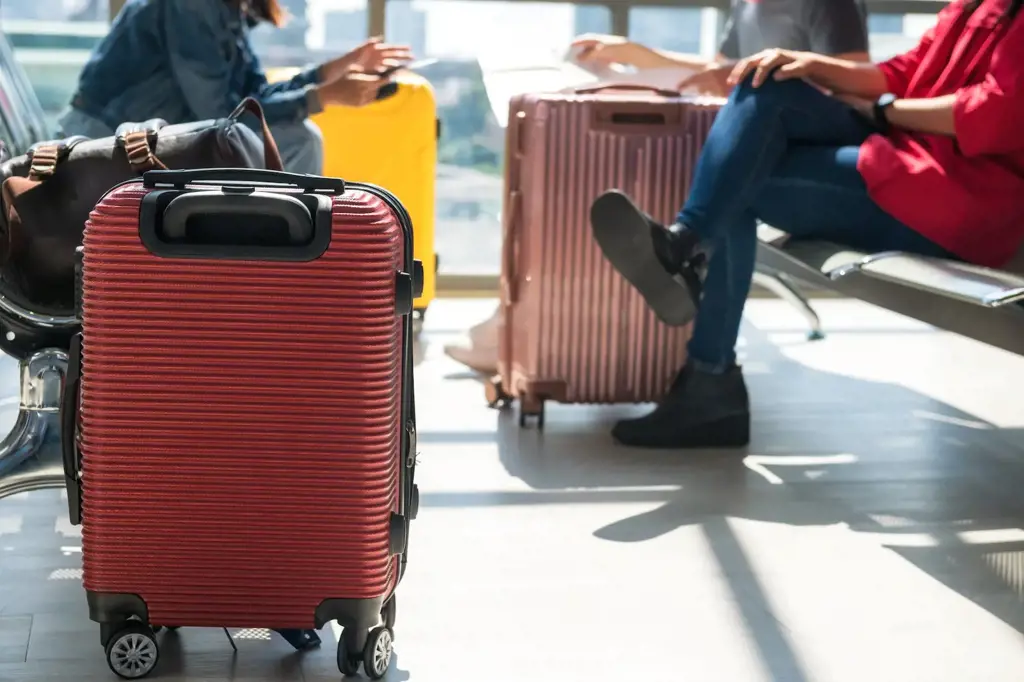
Are you planning a trip abroad? It's important to familiarize yourself with the rules and regulations regarding hand baggage restrictions. Each country has its own set of guidelines that can impact what you can bring on board. From size and weight restrictions to prohibited items, understanding these rules will ensure a smooth and hassle-free journey. So, before you pack your bags, let's dive into the world of international travel hand baggage restrictions.
| Characteristics | Values |
|---|---|
| Maximum weight | Varies by airline, typically 7-10 kg |
| Maximum dimensions | Varies by airline, typically around 56 cm x 45 cm x 25 cm |
| Number of bags allowed | Varies by airline, typically 1-2 bags |
| Prohibited items | Sharp objects, flammable materials, explosive substances, etc. |
| Liquids restriction | Maximum 100ml per container, all containers must fit in a clear, resealable plastic bag |
| Electronic devices | Allowed in hand baggage, must be switched off during takeoff and landing |
| Medication and baby items | Allowed in reasonable quantities, may require additional screening |
| Duty-free purchases | Allowed, but may need to be placed in a sealed bag with proof of purchase |
| Restricted items specific to country | Varies by country, may include items such as firearms, certain food items, etc. |
| Carry-on size enforcement | Airlines may have luggage sizers at the gate to ensure compliance |
| Additional restrictions during pandemic | Additional restrictions may be in place related to face masks, COVID-19 test results, etc. |
What You'll Learn
- What are the current hand baggage restrictions for international travel?
- What size and weight limitations are typically imposed on carry-on luggage for international flights?
- Are there specific restrictions on the types of items that can be carried in hand luggage on international flights?
- Are there any differences in hand baggage restrictions for different airlines or countries?
- What happens if a passenger exceeds the hand baggage restrictions for international travel?

What are the current hand baggage restrictions for international travel?

When it comes to international travel, it's crucial to stay up-to-date with the current hand baggage restrictions. These regulations are in place to ensure the safety and security of all passengers on board. In this article, we will dive into the current hand baggage restrictions for international travel.
Before we get into the specifics, it's important to note that hand baggage restrictions may vary between airlines and countries. Therefore, it's always a good idea to check with your airline or travel agent for the most accurate and up-to-date information regarding what you can bring as hand baggage.
In general, most airlines allow passengers to bring one carry-on bag and one personal item on board. The carry-on bag typically has size limitations, with the most common dimensions being around 22 x 14 x 9 inches (55 x 35 x 23 cm). It's important to note that larger or heavier items may need to be checked in as hold baggage.
As for the personal item, it can be a handbag, laptop bag, or small backpack. The dimensions for personal items are usually smaller than the carry-on bag, typically around 16 x 12 x 6 inches (40 x 30 x 15 cm). Again, it's important to check with your airline for their specific requirements.
In addition to size restrictions, there are also restrictions on the types of items that can be brought in your hand baggage. These restrictions are in place to ensure the safety of all passengers on board. Some of the commonly restricted items include:
- Liquids: In most cases, liquids are restricted to containers of 3.4 ounces (100 milliliters) or less. These containers must be placed in a clear, resealable plastic bag, with each passenger being limited to one bag.
- Sharp objects: Sharp objects such as knives, scissors, and razor blades are typically not allowed in hand baggage. These items should be packed in your checked baggage.
- Sporting goods: Items such as baseball bats, golf clubs, and hockey sticks are generally not allowed in hand baggage. These items should also be checked in.
- Firearms and ammunition: These items are strictly regulated and usually prohibited in hand baggage. They must be declared and transported in accordance with the airline's guidelines.
It's important to note that these restrictions may vary between countries and airlines, so it's always advisable to check with your airline or travel agent before packing your bags. Additionally, it's essential to comply with any additional security measures or regulations implemented by the airport or airline.
In summary, the current hand baggage restrictions for international travel typically allow for one carry-on bag and one personal item. There are size limitations for both items, and certain items such as liquids, sharp objects, and sporting goods may be restricted. To ensure a smooth travel experience, it's crucial to familiarize yourself with the specific regulations of your airline and destination.
IATF Guidelines: A Comprehensive Overview of Travel Restrictions
You may want to see also

What size and weight limitations are typically imposed on carry-on luggage for international flights?

When it comes to international travel, understanding the size and weight limitations for carry-on luggage is essential. Each airline has its own specific regulations, but there are some general guidelines that are commonly followed.
Size Limitations:
Most international airlines have similar requirements for the size of carry-on luggage. The typical maximum dimensions for carry-on bags are around 22 inches in length, 14 inches in width, and 9 inches in height. However, it is important to note that these dimensions can vary slightly depending on the airline, so it is always a good idea to check with your specific carrier before traveling.
Weight Limitations:
Weight limitations for carry-on luggage can also vary from airline to airline. In general, most airlines set a maximum weight limit of around 22 pounds (10 kilograms) for carry-on bags. It is important to note that this weight limit includes not only the items in your bag but also the weight of the bag itself. Some airlines may have lower weight limits, particularly for smaller regional flights, so it is crucial to verify the weight restrictions with your airline.
Additional Restrictions:
In addition to size and weight limitations, there are also some other restrictions to keep in mind when packing your carry-on luggage for international flights. Liquids, gels, and aerosols must be in containers of 3.4 ounces (100 milliliters) or less and all containers must fit into a clear, quart-sized plastic bag. Each passenger is typically limited to one plastic bag. Additionally, sharp objects such as knives, scissors, and nail clippers should be packed in checked luggage or left at home to comply with airline regulations.
Consequences of Violating Regulations:
If your carry-on bag exceeds the size or weight limitations imposed by the airline, it may need to be checked in and subjected to additional fees. In some cases, if the bag is deemed too large or heavy to fit in the overhead bin or under the seat, it may need to be transported in the cargo hold. This can lead to extra costs, potential damage to your belongings, and inconvenience. It is always best to comply with the airline's regulations to avoid any issues.
It is important to remember that these regulations are subject to change, so it is advisable to check with your airline before you travel to ensure that you are aware of the specific limitations. Additionally, if you are traveling with multiple airlines or have connecting flights, it is important to check the regulations of each individual carrier, as they may differ.
In conclusion, understanding the size and weight limitations for carry-on luggage on international flights is crucial to ensure a smooth and hassle-free travel experience. While most airlines have similar size and weight restrictions, it is essential to verify the specific regulations with your airline before traveling. By packing your carry-on bag within the limits and following the airline's guidelines, you can avoid additional fees, inconvenience, and potential damage to your belongings.
The Latest Updates on Domestic Airline Travel Restrictions: What You Need to Know
You may want to see also

Are there specific restrictions on the types of items that can be carried in hand luggage on international flights?

When it comes to international flights, there are indeed specific restrictions on the types of items that can be carried in hand luggage. These restrictions are in place to ensure the safety and security of all passengers and crew onboard the aircraft. It is important for travelers to be aware of these restrictions to avoid any delays or penalties at the airport.
One of the most common restrictions is regarding liquids. Passengers are generally only allowed to carry small amounts of liquids in containers that are 100 milliliters (3.4 ounces) or less. These containers should be placed in a clear, resealable plastic bag with a maximum capacity of 1 liter (1 quart). The liquid limit also applies to gels, pastes, creams, and aerosols.
In addition to the liquid restriction, there are also restrictions on sharp objects. Passengers are not allowed to carry any sharp objects such as knives, scissors, or razor blades in their hand luggage. These items should be packed in checked baggage instead. However, there are exceptions for certain objects such as nail clippers and disposable razors with blade guards.
Another important restriction is on prohibited items. There are certain items that are strictly prohibited from being carried in hand luggage on international flights. These include firearms, explosives, flammable materials, and corrosive substances. It is important to check the specific regulations of the airline and destination country to ensure compliance with these prohibited items.
Electronic devices are generally allowed in hand luggage, but there may be additional screening or security procedures for larger devices such as laptops and tablets. These devices may need to be removed from their cases and placed in a separate bin during the security screening process.
It is also important to note that some countries may have additional restrictions and regulations on certain items. For example, some countries may have restrictions on the import or export of certain agricultural products, medications, or cultural artifacts. Travelers should check the customs regulations of their destination country to ensure compliance with any additional restrictions.
Overall, it is essential for travelers to familiarize themselves with the specific restrictions on hand luggage for international flights. This will help to ensure a smooth and hassle-free journey through airport security and avoid any unnecessary delays or penalties. It is always best to check the regulations of the airline and destination country before packing to ensure compliance and a stress-free travel experience.
Navigating Nevada: What You Need to Know About Current Travel Restrictions
You may want to see also

Are there any differences in hand baggage restrictions for different airlines or countries?

Hand baggage restrictions can vary from airline to airline and from country to country. It is important for travelers to be aware of these differences in order to avoid any inconvenience or additional charges at the airport.
Different airlines have their own set of rules and regulations when it comes to hand baggage. Some may allow a certain weight and dimension limit, while others may have different restrictions. It is always a good idea to check the specific rules of the airline you are flying with before your trip. This can usually be found on the airline's website or by contacting them directly.
In addition to airline-specific regulations, hand baggage restrictions can also vary depending on the country you are traveling to or from. Each country has its own security regulations in place, which can affect what you can bring in your hand luggage. For example, some countries may have restrictions on liquids, gels, and aerosols, limiting the amount you can bring on board. It is important to check the security regulations of the country you are traveling to in order to avoid any issues at the airport.
To ensure a smooth travel experience, it is recommended to pack your hand luggage in accordance with the most stringent regulations. This means following the rules of the airline with the most restrictive policies or complying with the security regulations of the country you are traveling to. By doing so, you can avoid any potential problems and have a hassle-free journey.
It is also worth noting that some airlines offer different baggage allowances based on the class of travel. Business class and first class passengers may be entitled to a higher baggage allowance compared to economy class passengers. If you are unsure about the baggage restrictions for your specific travel class, it is best to check with the airline or your travel agent.
In conclusion, hand baggage restrictions can vary from airline to airline and from country to country. It is important to familiarize yourself with the specific regulations of the airline you are flying with and the country you are traveling to in order to avoid any issues at the airport. Pack your hand luggage in accordance with the most stringent regulations to ensure a smooth and hassle-free journey.
Discover the Health and Travel Restrictions by Destination to Ensure a Safe Journey
You may want to see also

What happens if a passenger exceeds the hand baggage restrictions for international travel?

When traveling internationally, it is essential for passengers to adhere to the hand baggage restrictions set by airlines and airports. These restrictions are in place to ensure the safety of all passengers and crew members. However, there may be instances where a passenger exceeds these limitations. So, what happens if a passenger exceeds the hand baggage restrictions for international travel?
Firstly, it is important to note that each airline and airport may have different rules and regulations regarding hand baggage restrictions. It is recommended that passengers check with their specific airline before traveling to understand the exact limitations. Typically, passengers are allowed to carry one piece of cabin baggage and one personal item, such as a laptop bag or handbag.
If a passenger exceeds the hand baggage restrictions, there are a few possible outcomes depending on the situation. The most common scenario is that the passenger will be asked to remove or reduce the amount of hand luggage they have. This could involve transferring items to checked baggage or discarding any excess items. Passengers should be prepared for this possibility and ensure they have packed their essential items in a way that can be easily separated if needed.
In some cases, if the excess baggage cannot be transferred or reduced, the passenger may be required to pay an additional fee. This fee is typically charged based on the weight or size of the excess baggage. It is important to note that these fees can vary significantly between airlines, and passengers should be aware of any potential charges before arriving at the airport.
If a passenger refuses to comply with the hand baggage restrictions or is unable to pay any applicable fees, airlines reserve the right to deny boarding. This is done to maintain the safety and comfort of all passengers on the flight. It is important for passengers to understand that exceeding the hand baggage restrictions is a violation of airline policies and can result in inconvenience and added costs.
To avoid any issues with hand baggage restrictions, passengers should familiarize themselves with the rules beforehand. This includes checking the weight and size limitations for both the cabin baggage and personal items. It is also advisable to pack efficiently and only bring essential items to minimize the chances of exceeding the restrictions.
In conclusion, if a passenger exceeds the hand baggage restrictions for international travel, they may be asked to remove or reduce the excess baggage or pay an additional fee. Airlines have the right to deny boarding if a passenger refuses to comply with these restrictions. To avoid any complications, it is recommended that passengers familiarize themselves with the specific rules and limitations set by their airline and pack accordingly. Being prepared and following the guidelines will help ensure a smooth and hassle-free travel experience.
Exploring Current Travel Restrictions in Maryland: What You Need to Know
You may want to see also
Frequently asked questions
There are several items that are typically prohibited in hand baggage during international travel. These include sharp objects such as knives, scissors, and razors, as well as flammable substances like lighters and aerosol cans. Additionally, items such as firearms, explosives, and certain types of sporting equipment are also generally not allowed in hand baggage.
When traveling internationally, passengers are generally limited to carrying containers of liquids, gels, and aerosols that are 3.4 ounces (100 milliliters) or less. These containers must be placed in a clear, quart-sized bag and the passenger is typically limited to one bag per person. Some exceptions may be made for essential medications or baby formula, but they must be declared separately at the security checkpoint.
Yes, there are often limits on the size and weight of hand baggage when traveling internationally. Airlines typically have specific dimensions and weight restrictions for hand baggage, which may vary depending on the airline and the class of service. It is important to check with your specific airline for their regulations to ensure that your hand baggage meets their requirements.
Yes, most electronic devices are allowed in hand baggage during international travel. However, they may need to be screened separately at the security checkpoint. It's a good idea to check with the airline or the Transportation Security Administration (TSA) for any specific regulations regarding electronic devices, as there may be restrictions on larger items such as laptops or portable chargers.
This can vary depending on the destination and airline, but in general, solid food items are usually allowed in hand baggage during international travel. However, liquids, gels, and other similar items are subject to the aforementioned size and quantity restrictions. It's important to check with the specific airline and destination country for any specific regulations regarding food and beverages in hand baggage.







